Why didn't you varnish them? This is one of the questions we received after the refinishing the solid oak doors of the Pitar Moș church in Bucharest. Re-reading the article I realized that, although it was obvious to me why I chose Kreidezeit oil-based lazura, for someone who was a DIY enthusiast who wanted to repaint doors or windows himself, the reasons for the choice were not very clear. I then replied to the questioner saying that the question merited an article explaining the choice point by point. Below is the promised article.

Sculpture and oil used in abundance year after year made stripping very difficult
The church doors are carved and have been coated for years with linseed oil in excess, without the unabsorbed oil being wiped off the wood. The biggest problem was the oil remaining in the carving had turned into a gummy substance and set the dust, ruining the appearance of the doors. This was also the reason for refinishing them, so the first thing that needed to be done was to remove the grime.
A small parenthesis for those who still don't know what linseed oil. It is a very good waterproofing material, but it does not dry in contact with air. Its dryness is enhanced by boiling and the addition of siccatives (drying chemicals), but if a thick film is left on the wood, it still does not dry, but turns into a gummy substance. Therefore, after it is over-applied and the wood is allowed to absorb as much as it needs to, the surface must be wiped.
Even if the stripping was done repeatedly and then the surface was washed with thinner, it was virtually impossible to remove all traces of oil from the carving. The wood did not remain clean and in this case, the application of a water-based exterior varnish, the most resistant option, was out of the question as it would have had no adhesion and would soon peel off, compromising protection.
The option of using an alkyd varnish, compatible with linseed oil, did not seem a good one to me because of its low resistance over time. Such products are used less and less, as water-based varnishes are much more resistant. In addition, unlike oils, alkyd lacquers make a film that in type cracks and flakes. Refinishing is very difficult because all the varnish must be removed before applying any topcoat, including alkyd varnish.
Kreidezeit oil-based lazura I thought it was the best outdoor oil because it contains linseed oil and tung oil which makes the wood very well protected. In addition, they are products we have worked with before, we know them and their resistance over time was already tested.
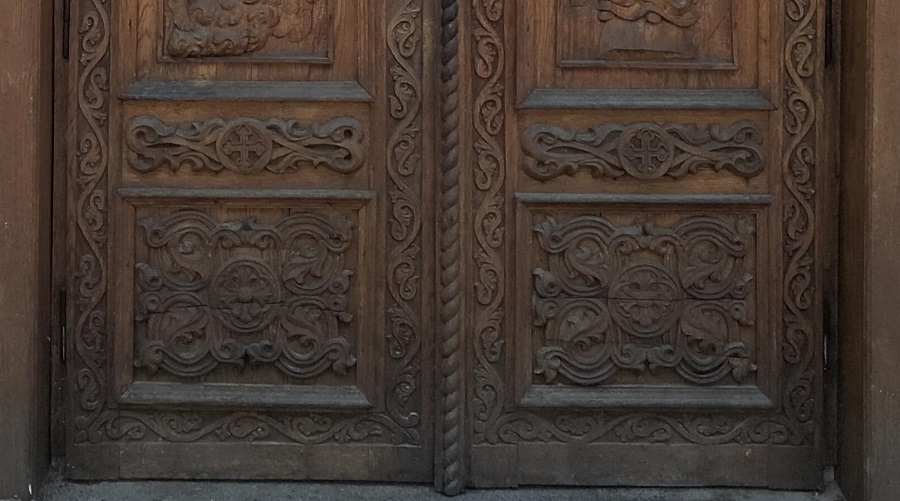
Water-based systems, although very durable, do not adhere to oiled surfaces
As water-based exterior varnishes are the most recommended, and indeed the most resistant at the present time, I would like to clarify a few points. First of all, they do not apply to oiled surfaces. expression "they get along like oil and water" is also valid here, i.e. the two materials do not get along, they are not compatible. If water-based varnishes are applied shortly after the surfaces have been oiled, the varnish will slip on the wood and not film.
If a period has elapsed and the oil on the surface has been washed off by rain, it is possible that the water-based varnish will adhere to the surface, but the resistance over time will be short. Oil remaining inside the wood expands during warm periods and pushes into the top film, loosening it from the wood. In this case it is recommended that the wood is first coarse sanded (60 or 80 grit), wiped with a cloth with thinner and then sanded again (150-180 grit) to restore the surface to a smooth finish. A water-based varnish can then be applied safely.
For a water-based system to have good resistance over time (8-12 years) it must be professionally applied according to the technology recommended by the manufacturer. This involves spray application, the most controlled environment possible, no extreme temperatures, sanding between coats, etc. When DIY projects are involved, these requirements can rarely be met, which is why the resistance over time is lower.
A clarification on the durability mentioned by the manufacturers. The 8-12 years refers to when the first cracks appear in the film, not when it is flaking or peeling. Checking the surfaces and maintaining them every 4-5 years prolongs the life of the finish by taking the stress out of refinishing.
Yacht lakes, praised for their strength, not always recommended
Another question when we discussed why we used oil and not varnish was why we didn't use varnish for yachts, as they are recognized as being very tough. Even though they are specially formulated to resist in the water, these varnishes are not recommended choices for protecting wood outdoors because the conditions are different. For boats, especially those that are also used at sea, you need a product that will hold up in water, in high and constant humidity and high salinity conditions.
Outside conditions are different, with protection concentrated in those directions. Humidity is variable, not permanent, and the wood is swells when humidity is high and contracts when humidity is low. This is why it needs an elastic product, a property lacking in boat varnish. Oils are recommended precisely because the lack of film allows the wood to vary dimensionally without the risk of cracking.
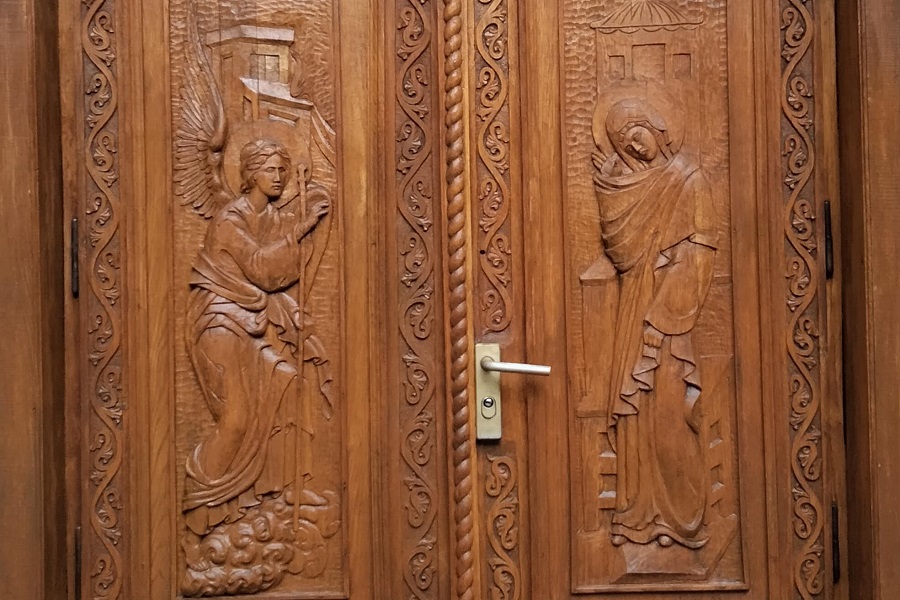
I hope you find the information useful. As always, additions are welcome. And if you have any questions or queries, please leave them below in the space provided. I will be sure to reply.
















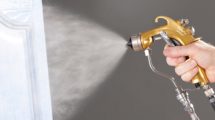
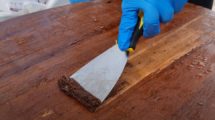







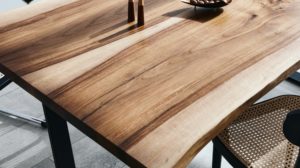





Do water-based systems, although very hard-wearing, adhere to surfaces varnished with alkyd lacquers?
No. Sometimes they seem to catch on the bottom layer, but at the slightest bump or knock they come off and flay like skin.